“The best overland vehicle is the one you love.” – NW Overland Rally
One of the benefits of writing for 4WD magazines is that you get to compare a lot of very different vehicles. And as with any machine, every vehicle is a series of compromises. Too lightweight and it breaks easily, too heavy uses a ton of fuel. A small turbo diesel will carry a decent load with good fuel economy, but can feel anemic on the highway. A dual sport bike goes forever on a litre of fuel, but you travel like a backpacker. A pickup lets you throw a ton of gear in the back but you are separated from all your stuff. An SUV is comfy and secure but can have limits on interior space. You get the picture. Despite the endless threads on every forum, there is no perfect overland vehicle.
Yet knowing that still doesn’t stop our family of five (mom, dad, and three kids) from trying to find that perfect combination.
We went from London to Singapore in a 1954 Land Rover a couple of years ago: 16,000 miles over a 9-month period. It was fun and got a lot of smiles, but it was uncomfortably slow and broke down almost every day.

We covered 16,000 miles in a 60-year-old truck the same size as a VW Bug.
We went 4,000 miles from Canada to Mexico and back in a Defender 110. It was great on the beaches and the rocky backroads, but on the US interstates it was loud and slow enough to be hazardous, and the lack of air conditioning was brutal in the deserts of Arizona, California, and Mexico.

Black paint and no air conditioning in the desert.
Our 6,200-mile trip from Seattle to NYC across the USA, and then back across Canada in a Ford Explorer was comfy on the pavement or graded gravel, but I hesitated to take it on a really rough track, especially when fully loaded, so it limited our camping and exploring options.
So when I planned a short 5,600-mile trip to the Arctic this summer, I decided it was again time for something different. I wanted comfort on the long highway stretches, to be able to carry all of my gear, extra fuel, tools, and spares. I needed a vehicle that could handle the punishment of the notorious Dempster Highway (900 miles roundtrip of mud and washboard) and still be nimble enough to climb a steep loose track to a secluded campsite on a hillside. I didn’t want to have to think about grizzly or polar bears while sleeping, so ideally I wanted something I could sleep inside. And in a perfect world, it would be simple, cheap, and mechanical so I could repair it with basic hand tools in the field, meaning nothing built after about the late 1990s. And of course, it had to have a bit of soul, because life is too short to drive a boring car.
I know that sounds like the holy grail of overland vehicles. What I ended up buying was a 1988 Range Rover Classic. And yes, I know that sounds like a terrible choice. In fact many might say an old Range Rover is one of the worst choices I could have made; obscure, unreliable, hard to get parts for, the list goes on.
I won’t deny that that is often true, especially for later models, but hear me out. The year 1987 was the first time Range Rovers were officially imported to North America by Land Rover. Prior to that, there were only grey-market imports. By 1988, it won the “Best 4×4” award by Playboy magazine (don’t be a hater). In 1989, Land Rover USA was confident enough in the vehicle to run their famous “Great Divide Expedition” to demonstrate the capability of these machines.

Posh period marketing.
These late ’80s Range Rovers were something special, a short burst of magic in a brand that always had a reputation for expense and unreliability. They had EFI for better economy and performance (earlier ones had dual carbs), a coil-sprung suspension for reliability (later models had a complicated air suspension), simple electronics, a manually-locking center-diff, and a de-tuned but very reliable 3.5-litre (215 cubic inch) V8 that was mostly unchanged since the 1960s. Later engines had larger displacement from the factory, but the early 3.5 is a known workhorse, even though it doesn’t have a ton of power.

Still surprisingly simple in 1988.
Most of those early RRCs have rusted away. They had easily-plugged drains in the sunroofs which resulted in saggy headliners and the floors rotting away under the carpets. Or they were bought by people who lived in parts of North America with lots of snow and ice, and therefore a lot of salt on the roads, which would eat away chassis rails and crossmembers. The rust issues combined with a reputation for expensive repair bills, driven by high-priced parts at the dealers, meant that a lot of owners didn’t try to keep old Rovers on the road. They traded them in or scrapped them. In the early 2000s, it was easy to pick up a cheap RRC and use it as a bush truck, for wheeling or hunting or whatever. Sadly this use accelerated the demise of most of those that remained.
Today, finding a solid 1980s RRC for less than the cost of a brand-new vehicle is getting pretty tough. I looked for months, and just when I was about to give up, I found one. It was a former California car, so it hadn’t yet rusted away. Sadly, it had a neglected interior, a leaky sunroof, unresponsive electrical switches, a rear window latch that wouldn’t stay latched, a spongy suspension, bad brakes, worse steering, a lack of power and a nasty ticking sound coming from the engine. But other than that…$1,500 later I was driving it home.
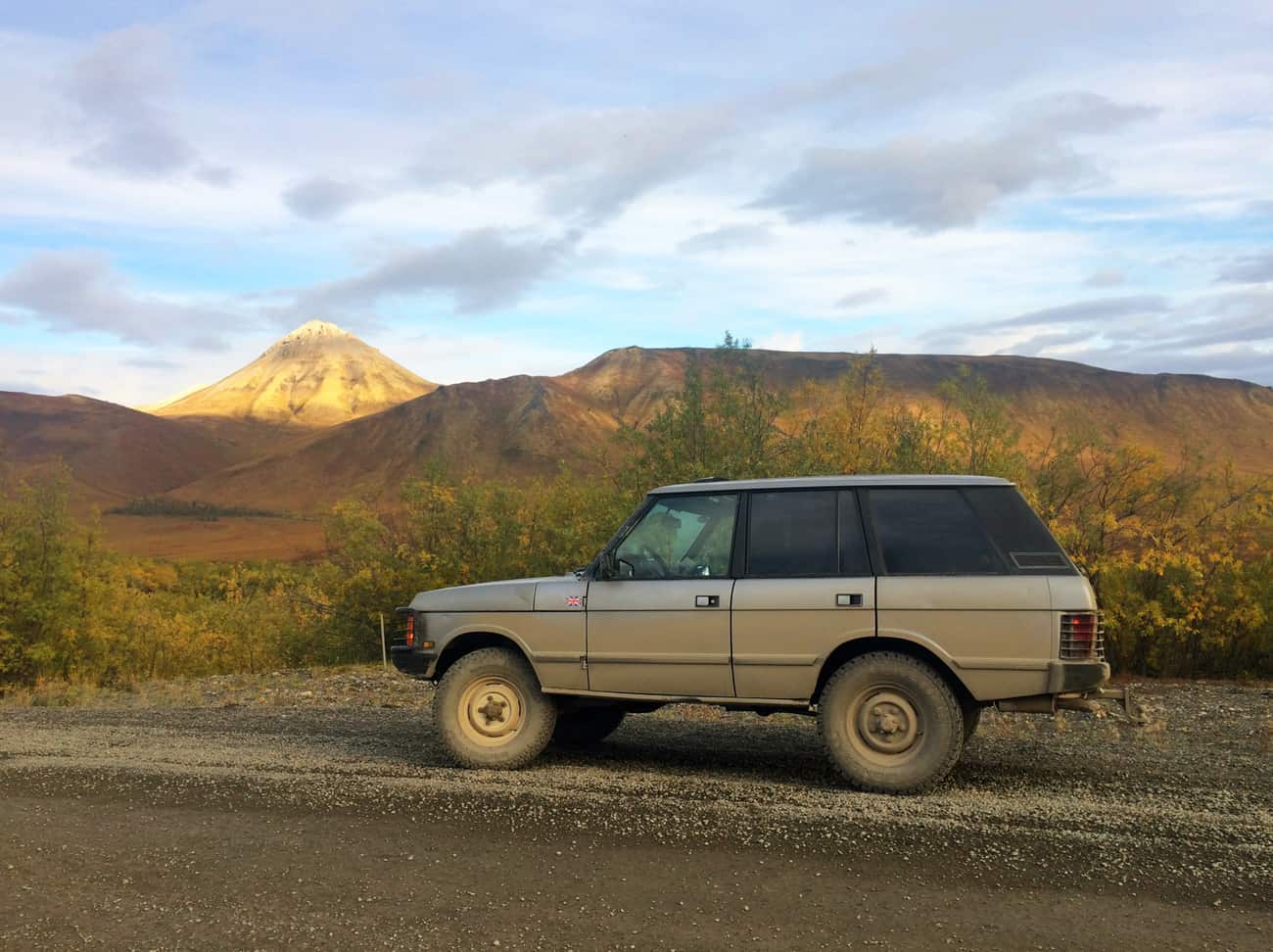
Step one was the mechanical stuff. I sent it to my go-to-guy for Land Rovers in BC: Don MacDonald of Rovalution Automotive in North Vancouver. He does everything from full concourse restorations to just patching up old trucks and getting them back on the road. I knew Don would be able to give me a list of everything the car needed from bumper to bumper, and then have a chat with me about a) what needed to be done, b) what would be nice to do, and c) what we could defer until later. I also knew he would let me know which bits I could safely tackle myself, saving a bit on labour charges.
Don called a week later with the good and bad news. The good news was that the truck was indeed straight and solid, no signs of any accidents, rust, or major prior repairs. The bad news was that in addition to all the other stuff, it needed the engine fully rebuilt. One cylinder had no pressure, one had coolant in it, and one had the end of a spark plug snapped off and bouncing around above the piston, scoring away at the cylinder walls (ah, now we know what that ticking noise was). We could bodge it by honing the one bad cylinder in place and redoing the head, but whenever I work on a truck I go in with the intention of keeping it forever or passing it on to my kids, so we decided to pull the engine, send it to a good machine shop, and do it right.
While the engine was out, we put in a new ARB Old Man Emu medium-duty suspension kit, giving us about a 1-inch lift. We also had the steering box rebuilt and replaced all wearable components on the steering. New brake rotors, pads, and brake booster sorted out stopping. The rear window latch was adjusted, but it’s a known issue with this model, so I looped a bicycle cable-lock around the latch and down to the bumper just to be safe. While the engine was out we decided to put in a new exhaust system. The original wasn’t leaking yet but it looked like it had less than a year of life left on it. The headliner was sagging so I removed the vinyl, planning to paint the backing board to match the interior. A judicious application of electrical contact cleaner spray had the interior switches working again.
Finally, the engine came back from the machine shop and it all went back together again. Much better. The truck still handles like a tank, but a very smooth and precise tank.

Speaking of tanks, this is the original Overland Train on display in the Yukon.
Back at home, I pulled the rear seats out and put on some steel wheels with taller 235/85R16 heavy-duty E-rated tires from one of my Series trucks (now possible with the moderate lift).

The General Tire AT2 is long wearing with predictable handling and is priced attractively.
The jump from 29- to 32-inch tires meant having to move the spare to behind the driver’s seat, secured with heavy cargo straps. Behind the spare, I stacked four Front Runner Wolf boxes accessible through the second-row door, and behind them, I still had room for a Drifta kitchen drawer and three 40-litre Sceptre jerry cans (2x fuel, 1x water). Tucked vertically beside everything was my new Tailgater tire table.
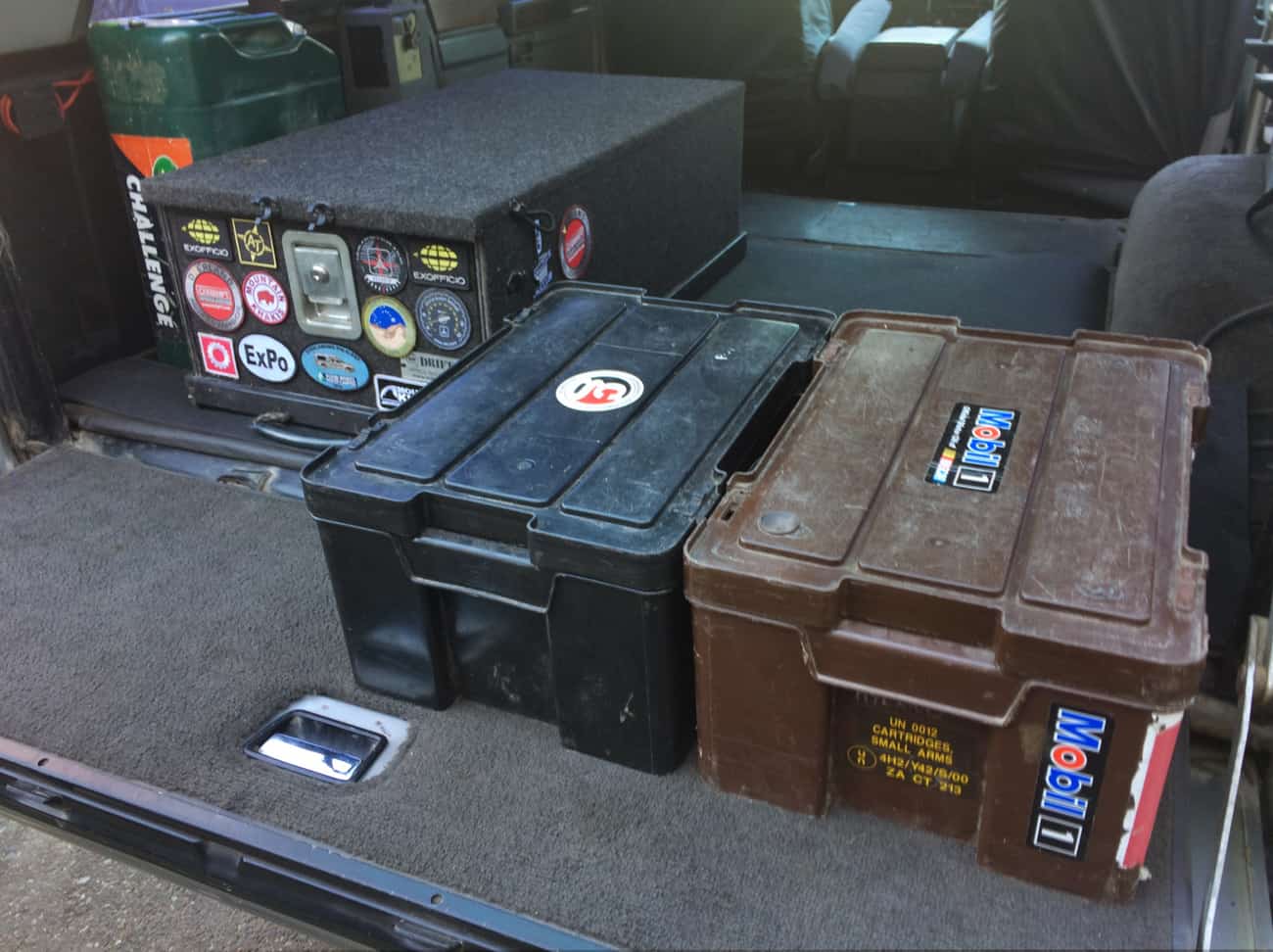
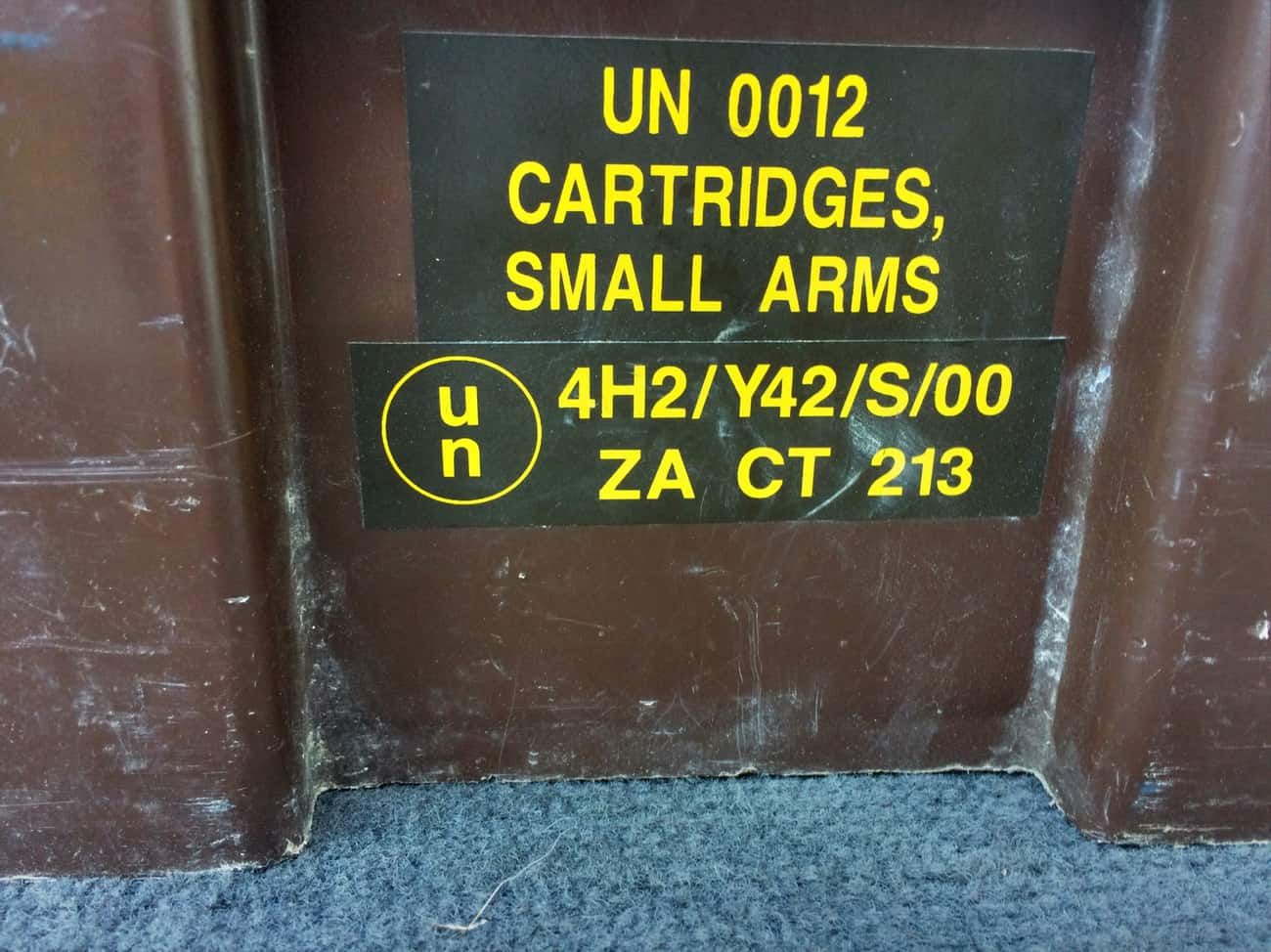
Above: The Wolf boxes are actually rebranded UN-spec ammo boxes designed to fit perfectly into the back of a Defender, but they work equally well for camping gear.
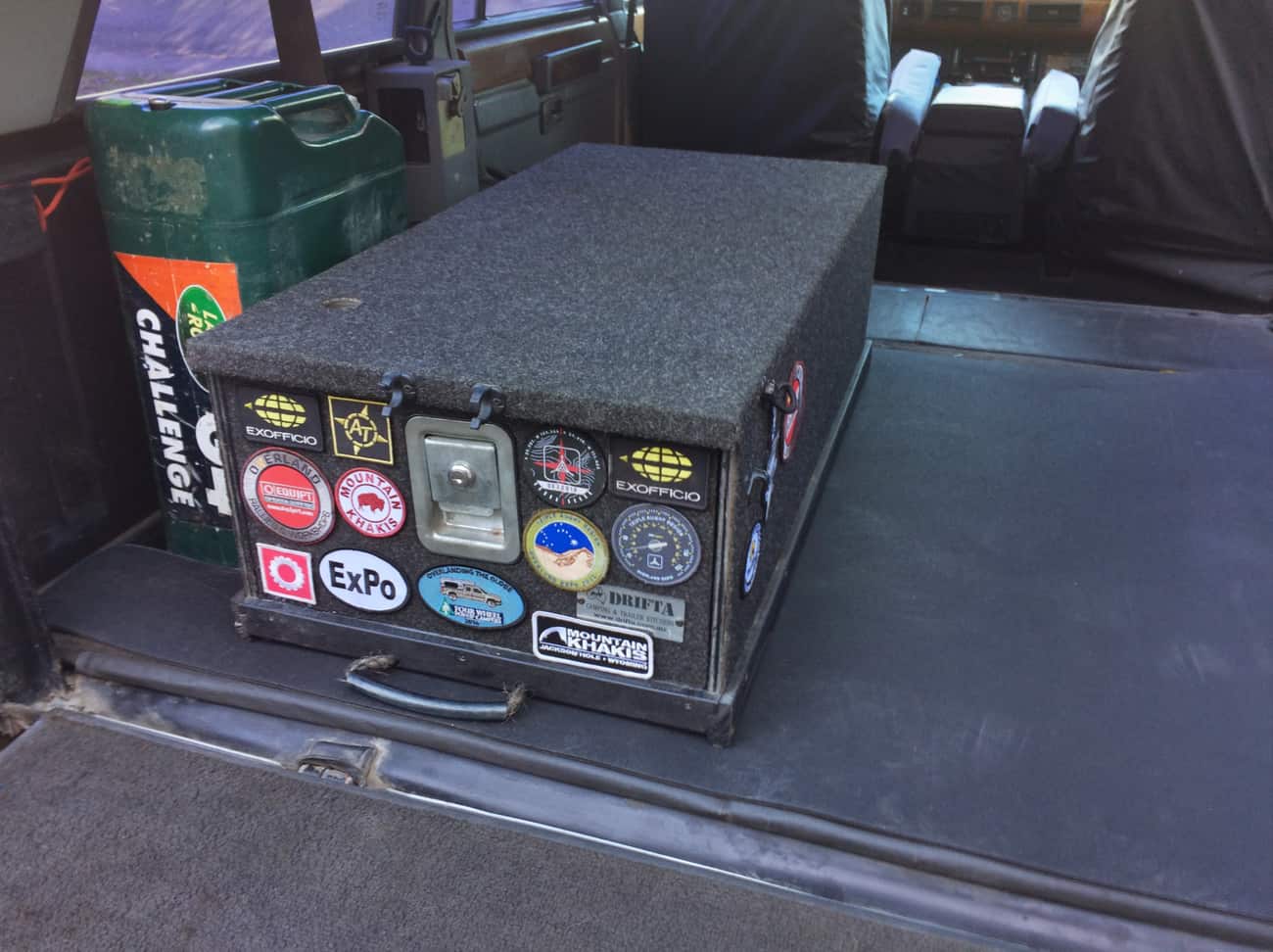
Above: The Drifta kitchen is a heavy-duty, low-tech chuckbox with folding legs and a single locking drawer. The lid opens up to double countertop workspace.
Below: The Tailgater tire table is the most stable camp table we have ever used. It performed double duty as a cooking platform and cocktail station.

On the passenger side, I tucked my tool rolls in the rear footwell and then put a small wood plank over it, creating a flat 6-foot-long sleeping area from the seat all the way to the tailgate. A foam pad, then an air pad, and finally my trusty down blanket and I was comfy as a bug in a rug.

The Nemo Tuo Pad has dual air chambers, allowing a customizable sleep setup.
On top of the bed I tossed a cheap tarp, the kind you get in the hardware store for a couple of dollars. Not only is a tarp handy for working under the car, but putting it on the bed while I was driving allowed me to drive with the windows down and the sunroof open on warm days and not worry about dust from the road covering my sleeping gear, or random gear snagging my down blanket. The last touch was a chunk of mosquito netting that was laying in my garage. I draped it over the top of a door with the window rolled down a few inches, and that gave me bug-free ventilation in the car while sleeping.
So, after all that, how did it do? Overall, everything on the trip went well (watch for an upcoming article on the trip itself).
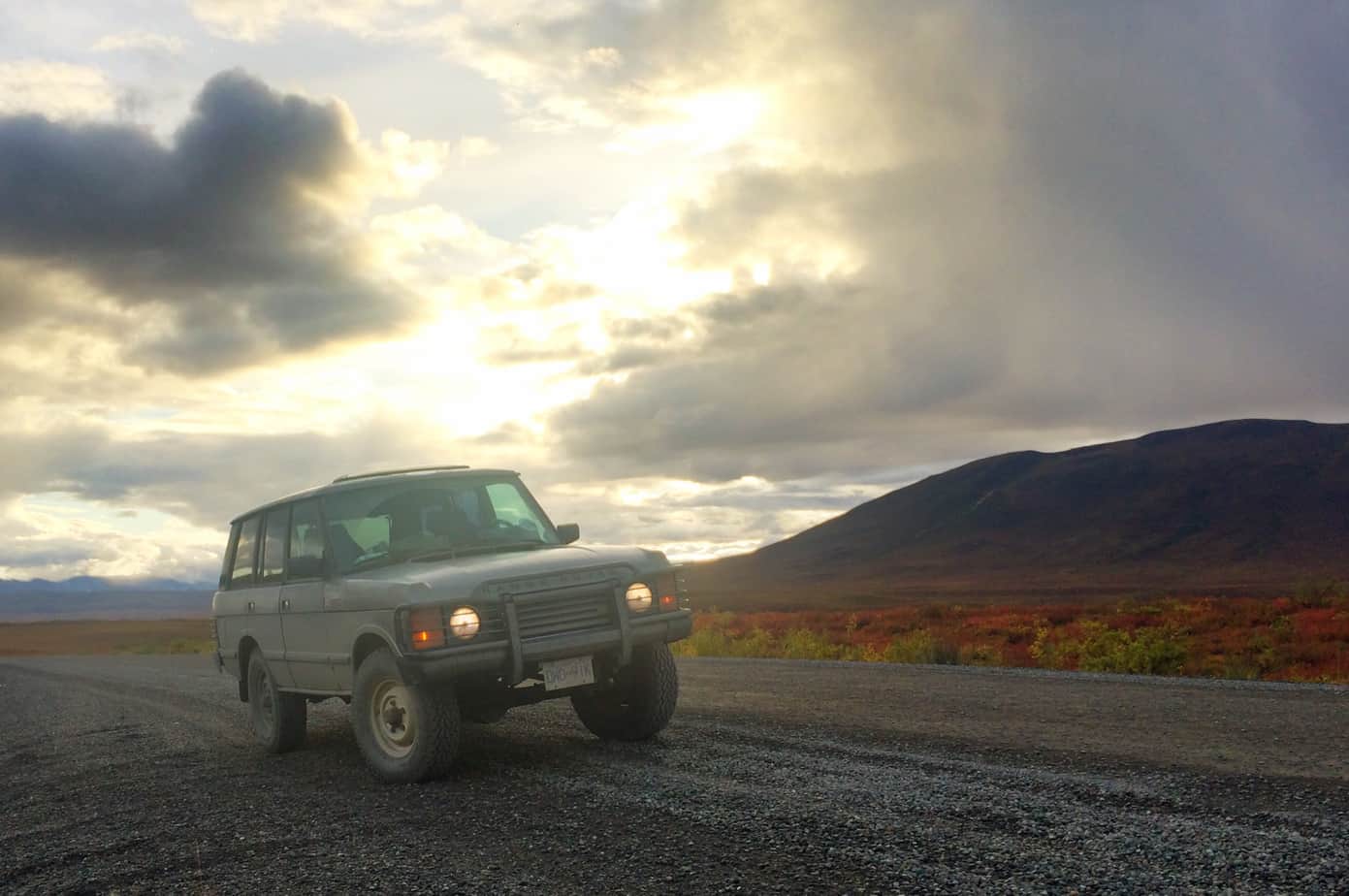
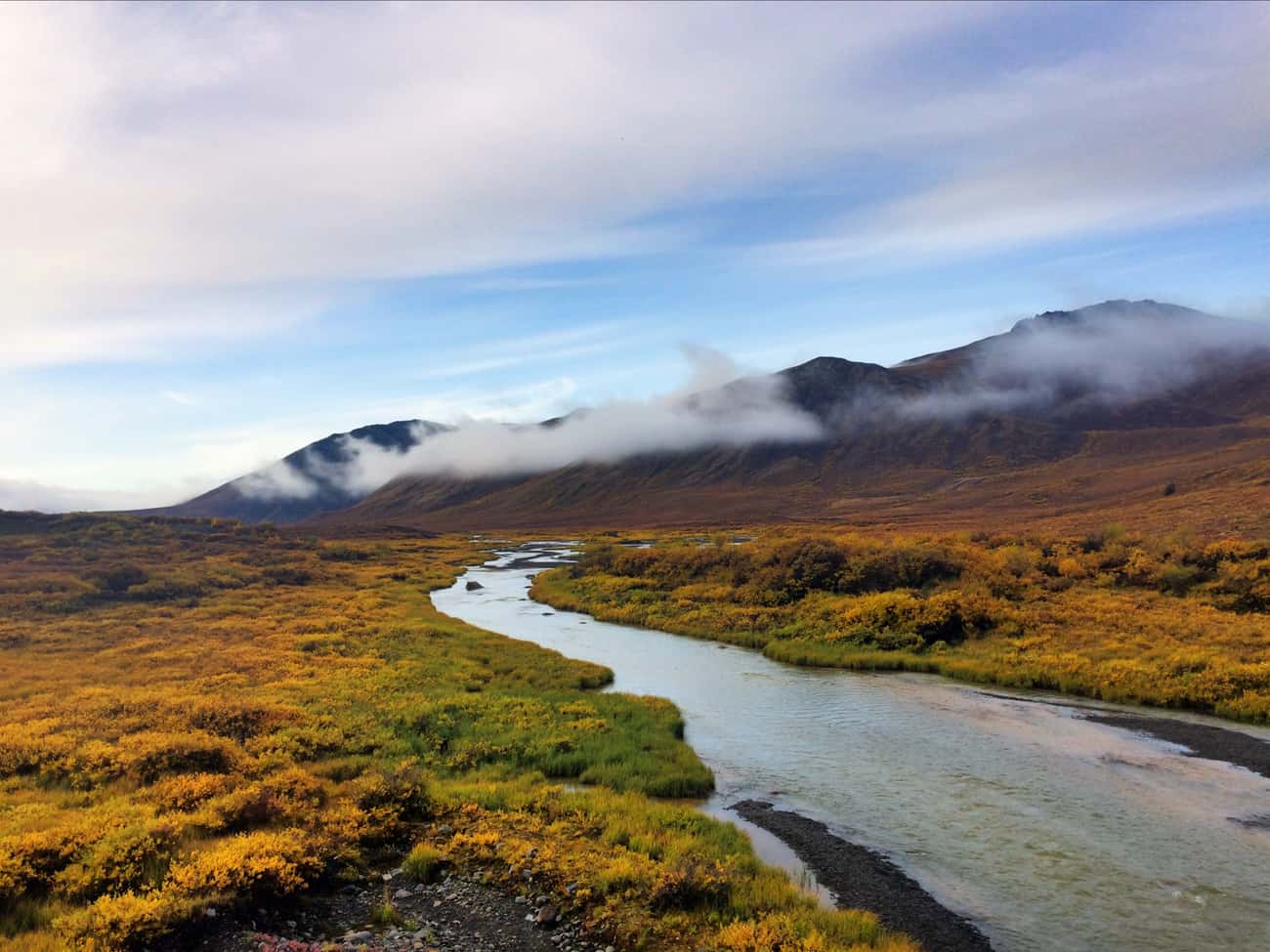
Above: The Dempster Highway is notoriously hard on tires, but the scenery makes up for the road conditions.
The heavy tires and new suspension just soaked up hundreds of miles of bruising rocky road on the Dempster, and the comfortable seats and decent soundproofing meant we arrived at our evening campsites with energy to spare, even after spending a whole day picking our way through the muddy construction that was the unfinished road up to Tuktoyaktuk. The new engine had a few small leaks but nothing serious and that was sorted out under warranty on our return.

The road is equal parts sharp gravel and mud.
The interior still needs some TLC, and the old girl could do with a lick of paint, but for a three-decade-old car, I’m pretty happy with how it all worked out. Granted, I put more money than I wanted into the engine rebuild, but that kind of thing is to be expected of a $1,500 purchase, and it should be good for another 30 years at least. Plus, not only does the old Rover have character, it will appreciate with age, unlike any new vehicle I could have acquired.
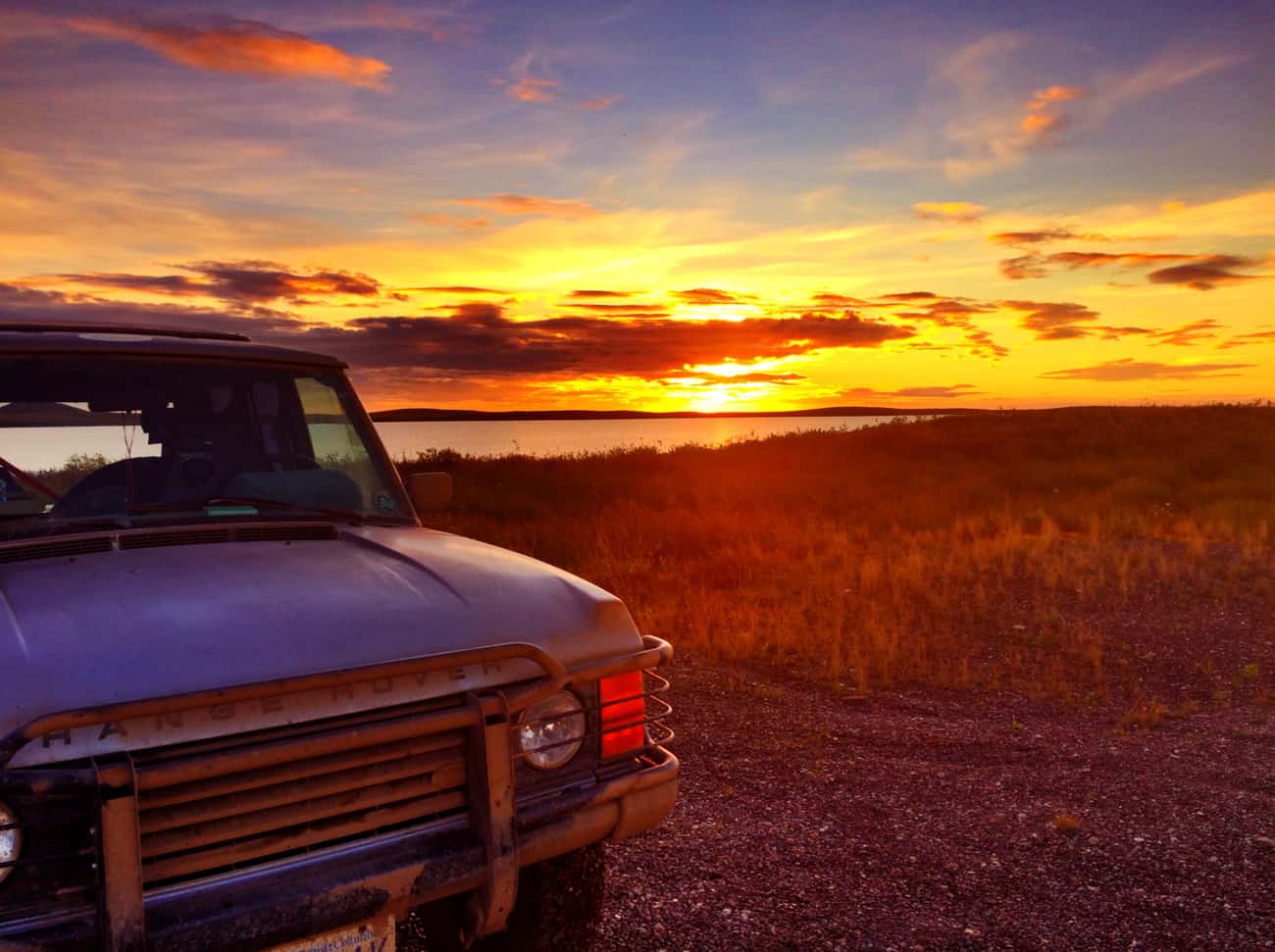

Above: Campsite on an Arctic Ocean beach.
So at the risk of reigniting all those forum threads, if you are looking for the perfect overlander, I say ignore your head, and shop with your heart.



4 Comments
Peter Matusov
November 13th, 2018 at 11:32 amI was spooked by the “Terrible choices” in the title of the article!
A Range Rover Classic is a beautiful choice for a long-distance travel and camping vehicle. Especially a long wheelbase version.
Patrick Lambert
November 14th, 2018 at 9:40 amGreat read Ray…love the pictures too!
Chris Frye
December 6th, 2018 at 10:21 pmGreat read, I bought one for myself for $250 (trade in at the wife’s dealership.thinking of adding one of our 12 volt a/c systems for sleeping .
Darren
January 24th, 2019 at 9:45 amI drove a Range Rover ambulance converted to a camper, from UK to South Africa and back – best overland 4×4 I have ever had.